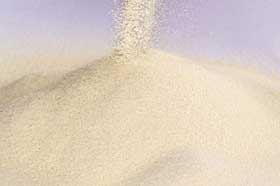Standardised on-farm protocol for phytase comparisons

With ever-widening variety between commercial phytases making direct comparisons almost impossible, and end user choice both difficult and confusing, AB Vista research director Dr Mike Bedford is calling for a standardised protocol for on-farm phytase comparisons to help clarify buying decisions.
“The increasing differences now being seen between phytase enzyme characteristics, modes of action and activity levels make achieving a true comparison harder than ever,” states Dr Bedford. “As a result, highly valuable commercial decisions are being based almost entirely on data generated by on-farm trials that typically fail to produce valid, repeatable results.
“Simply comparing recommended doses against one another is no longer good enough. What’s needed is a standardised trial protocol that will accurately and reliably evaluate different phytases on an equivalent basis.”
Current shortfalls include a failure to accurately assess the level of phosphorus (P) deficiency in test diets, insufficient P deficiency to allow full expression of each phytase on test, and single dose rate trials that overlook differing phytase concentrations.
“The challenge is that these are commercial farms, not carefully controlled research facilities, so the protocol also needs to be robust and practical,” Dr Bedford adds.
“The starting point has to be test diets sufficiently deficient in available P (avP) to ensure a marked reduction in feed intake and a clear impact from the test phytases, with that deficiency accurately determined by adding increments of 0.05% avP (in mineral form) until normal performance is restored. Testing each phytase at rates calculated to release 0.05, 0.10 and 0.15% avP, rather than at specific dose rates – while ensuring the top phytase dose rates do not restore performance to normal – will then establish directly comparable dose-response curves.
“Backed up by growth data and key bone measurements such as bone ash weight, and related to recommended dose rates and cost per tonne of feed treated, the result is a dataset that can add real value when determining which phytase will deliver the best commercial return.”













